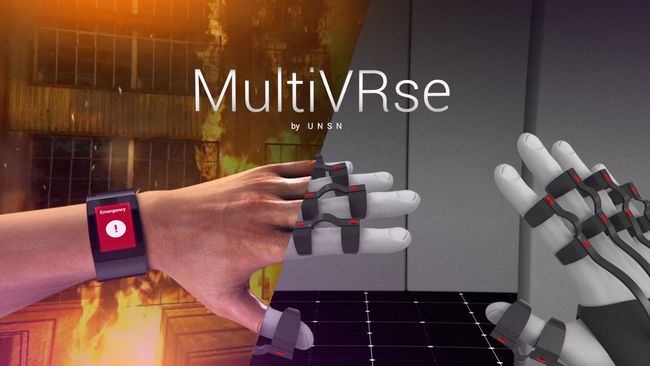Our proposed solution only makes use of technology that already exists, including all the VR equipment, sensors and visualisation technologies. There are only two areas that require bespoke pre-production (done only once, before the first setup):
- the floor tiles need Arduino-based NFC sensors and edge connectors installed
- the software that joins all the pieces together needs to be created
Once done, you will have a complete set of technologies and hardware that can be used to build any test scenario environment, that will adapt to any needs, that can be set up in a matter of minutes and that can be reused over and over again for new test cases and in new locations easily.
*** Pre-production: ***
First, we need to gather or produce the building blocks for the physical environment. We would reuse or custom-make different sized blocks that can serve as floor tiles, parts of walls, doors, sofas, beds, tables etc. They can be made of anything - wood, plastic, waste, or they can even be actual physical objects (actual windows, actual tables). Then, we would stick durable and waterproof NFC stickers under each corner of each block. So far nothing complex. Next, we would create simple Arduino-based NFC readers that would be put inside or under each floor tile and we would provide connecting outlets to each of the 4 floor tile sides, so they can be connected together in a grid. Finally, we would design 3D models for each block type. You can imagine for most of them (walls, floor tiles) these are 3D primitives that can be put together in a few minutes). That's it. See below why this is and how this will work.
The software build can't be detailed in couple sentences but is estimated to take between 3 to 5 months for a team of 3 developers.
*** New environment setup: ***
Get a PC with the software installed, plug it to electricity (or use a battery). Connect the first floor tile to the PC via USB and put it on the floor. Attach other floor tiles to the sides of the first one, creating a floor surface of any shape or size. Place blocks on top of the floor (effectively creating rooms, passages, furniture etc.) with their underneath NFC stickers touching the floor tiles.
At this point a matching 3D environment has already been created for you thanks to:
- the floor tiles being able to identify other tiles attached to their sides
- each tile being able to identify the object put on top of it, as well as its orientation, thanks to that object's unique NFC tags attached to each of its corners.
At this point you can dive straight into VR or customise the virtual environment.
For new NFC tags you need to specify the object’s height and you can specify a custom model if you’re not happy with a generic block generated based on the block’s outline and height. Once set, the corresponding model is assigned to the NFC tags and when the same block is moved or placed in a new setup, the system already knows what it is.
Further customisation of the VR environment can be done simply by clicking on walls and other items and choosing different textures for them or adding visual effects like smoke or fire to them.
To initiate the VR session, put on the body tracking sensors and place the VR headset on the first floor tile. It will synchronise the headset's position in the virtual world with real world (as we're not using any external tracking cameras). Then just pick up the headset and dive into the experience - walk, run around and operate within the parallel physical and virtual environments.
*** Disassembly & reusing: ***
At the end of the experience, simply remove all objects from the floor tiles and detach the floor tiles from each other, shut down the PC, that's it. Pack the blocks and send them to another place (or just get / produce more blocks). Set up a new layout simply by altering how the floor tiles are connected together and what objects are put on top. Again, the 3D environment matching the real life one will be automatically generated for you.
*** Additional hardware required: ***
General:
- Wi-Fi router for local area network (no internet connection is required)
- PC, PC mouse, keyboard, monitor
- USB cables
Per first responder:
- BRIDGE VR goggles (
https://bridge.occipital.com/)
- iPhone 6 or 7 (for the VR goggles)
- Perception Neuron body tracking sensors (
https://neuronmocap.com/)
- Wireless headphones for athletes (
https://www.jaybirdsport.com/en-us/x3-bluetooth-headphones.html)
